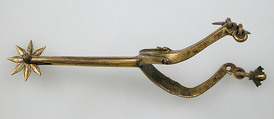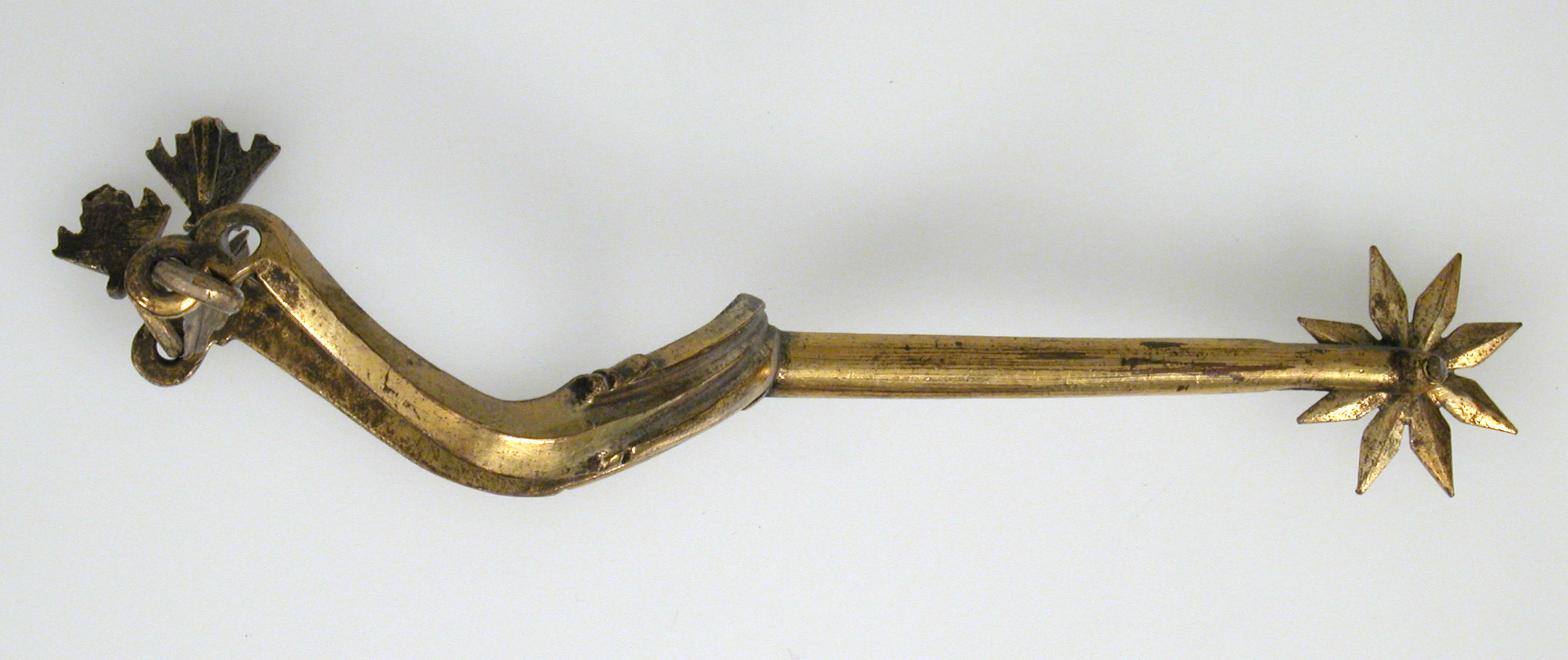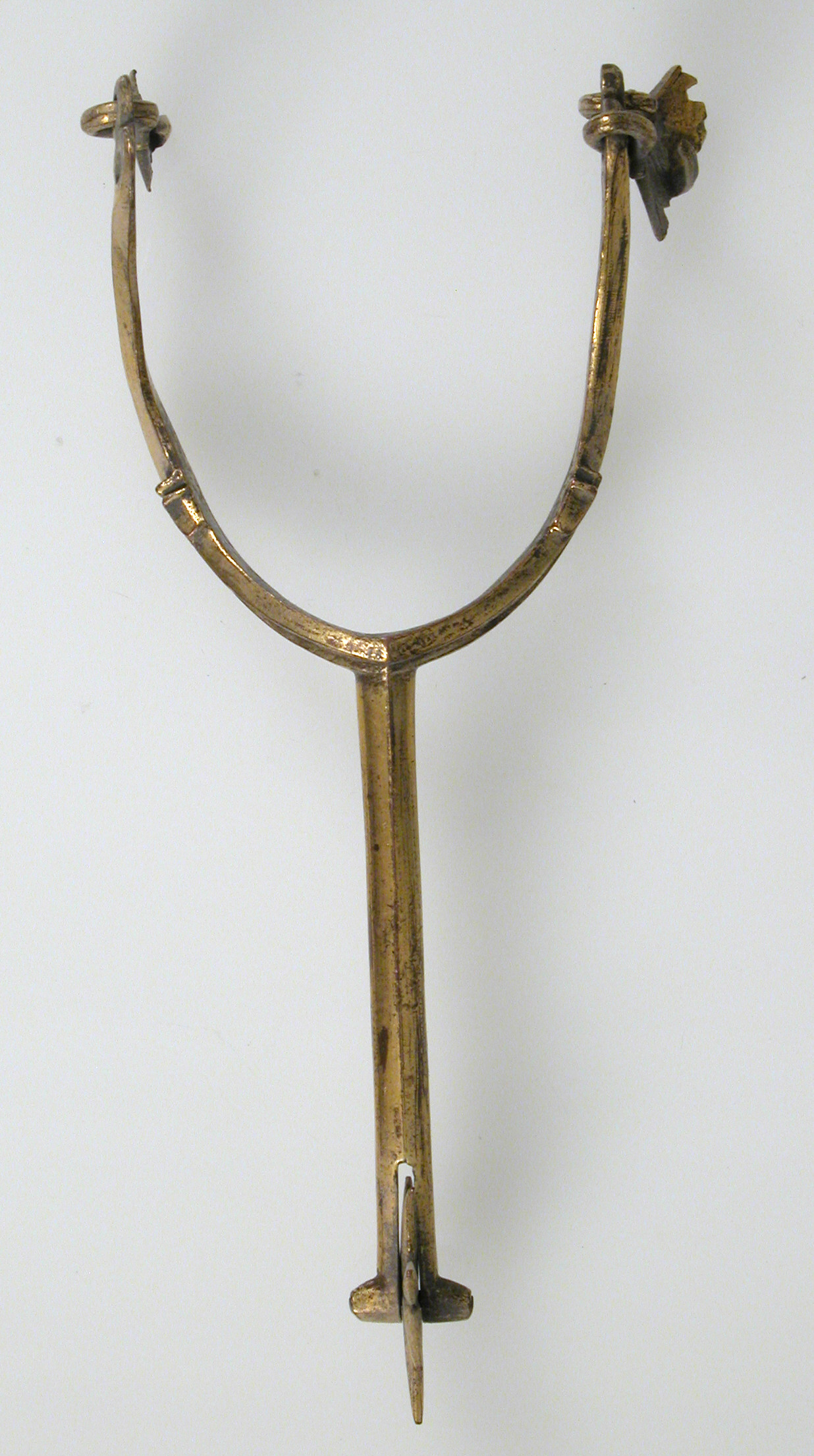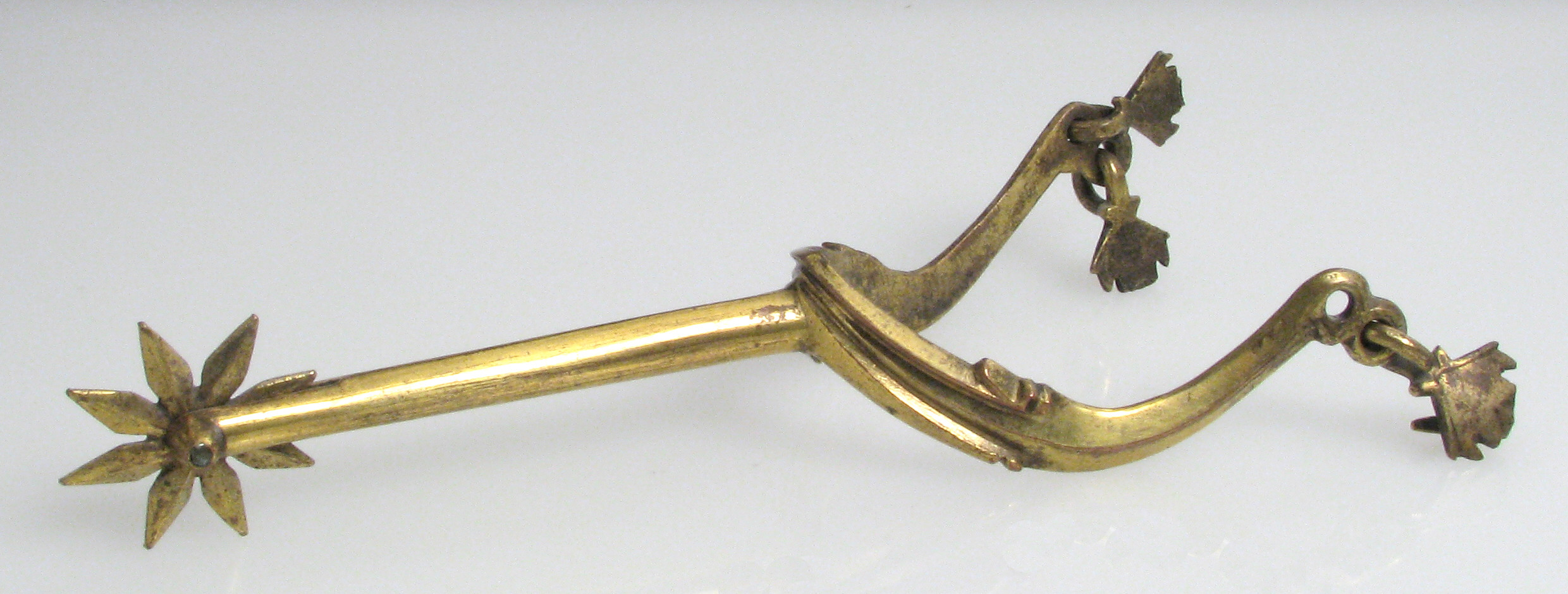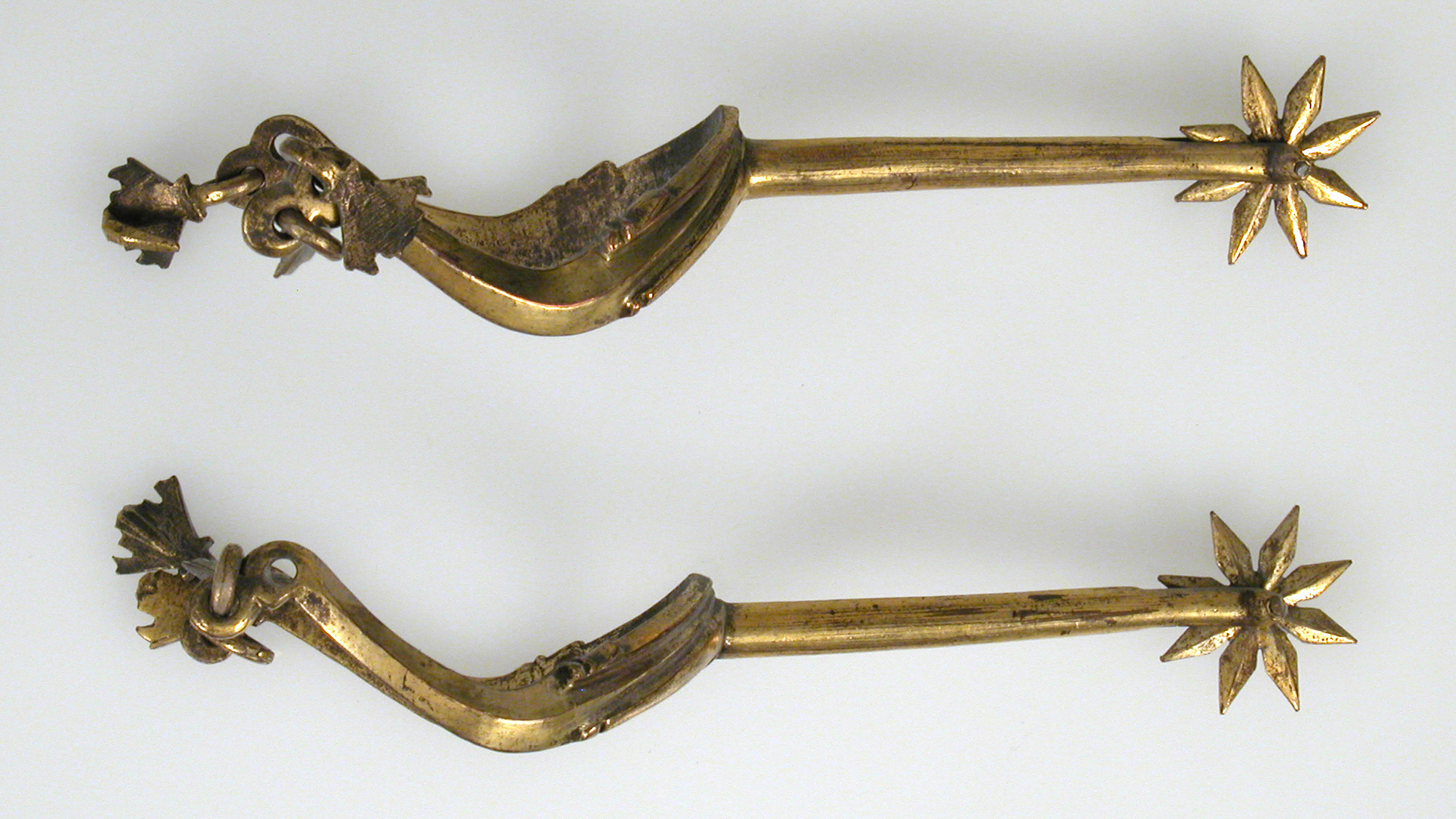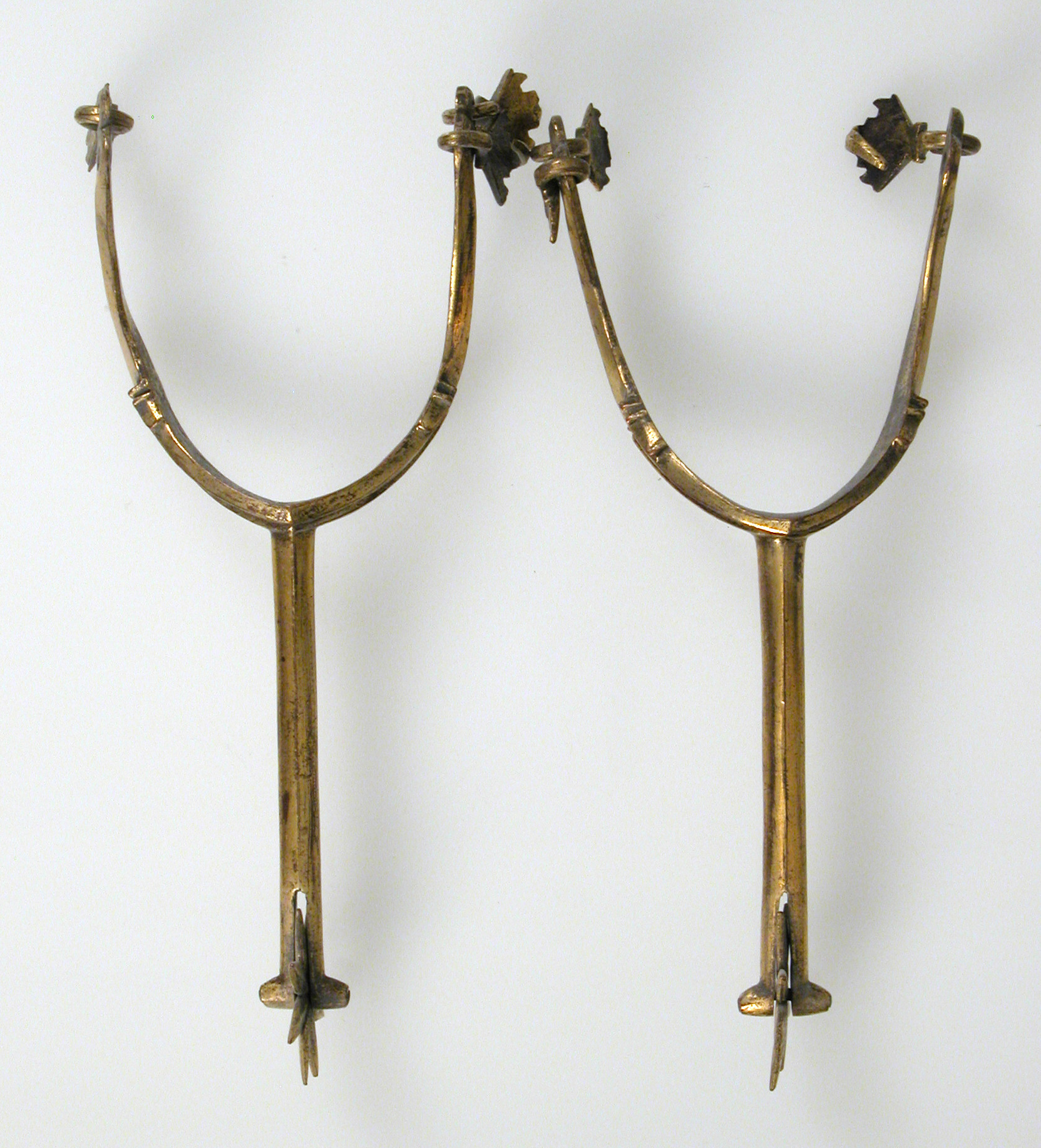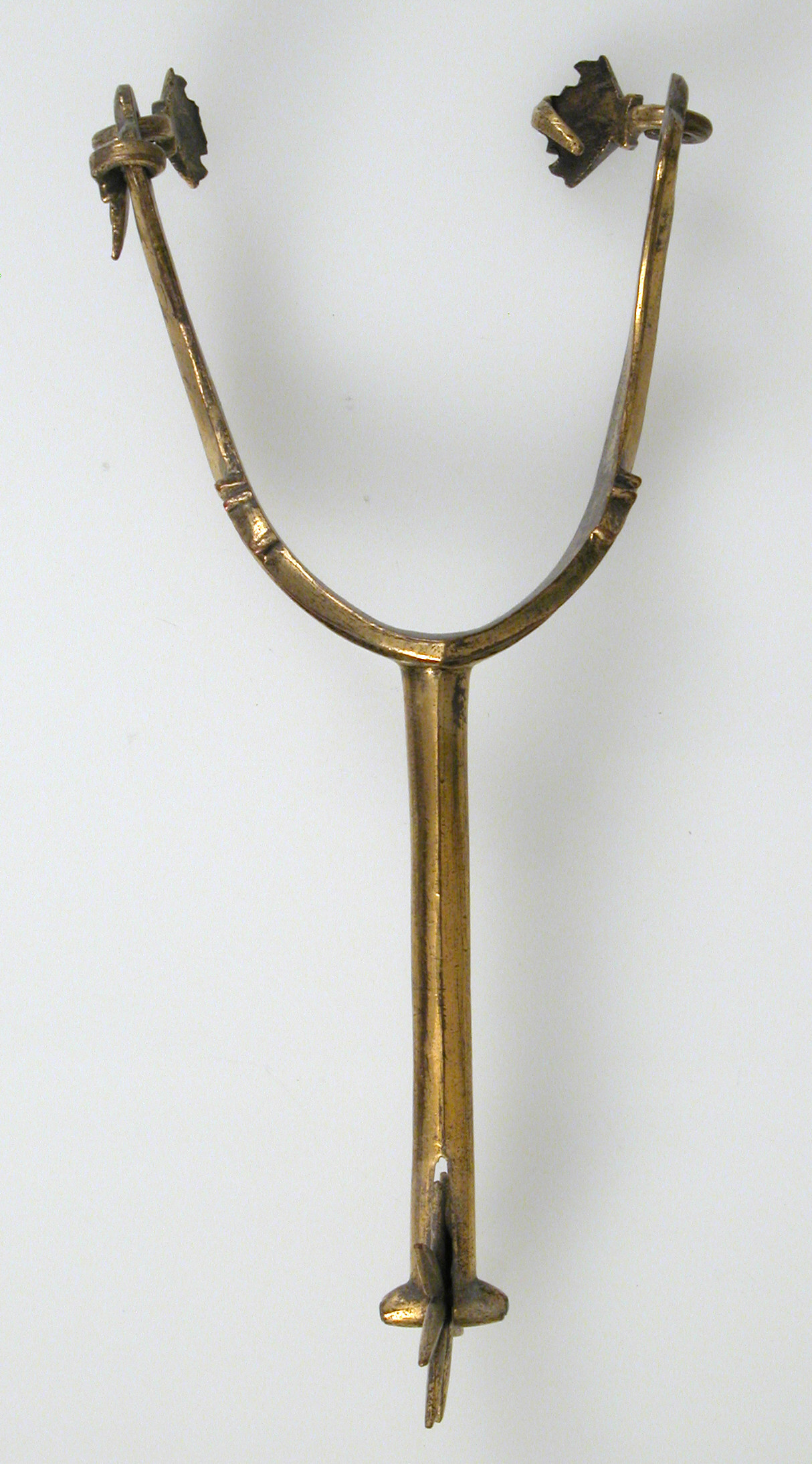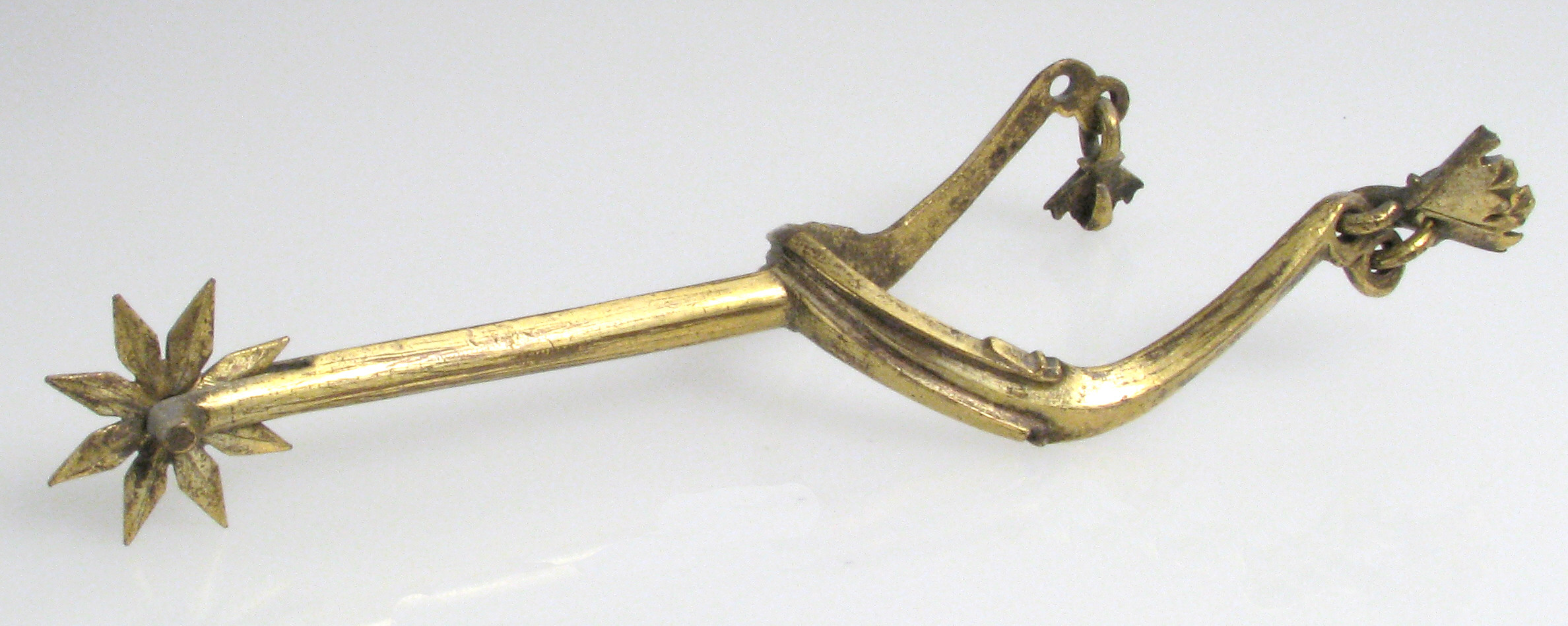Pair of Rowel Spurs
Not on view
Each of these elegant gilded spurs is subtly decorated with a foliate rowel, and some moldings on the heel and hooks shaped as ivy leaves. In the 15th century, rowel spurs with very long necks were common in Western Europe. During this period, the elevated war saddles and the very specific riding style, with long stirrup leathers and legs extended forward, had the consequence of moving the rider’s feet away from the horse’s flank. Thus, these long-necked spurs allowed the rider to maintain control without having to disturb their position. As a knight’s status was closely related to his horse, spurs became one of the symbols of chivalry, and one of the tokens given to him during his knighting.
Due to rights restrictions, this image cannot be enlarged, viewed at full screen, or downloaded.
This artwork is meant to be viewed from right to left. Scroll left to view more.
